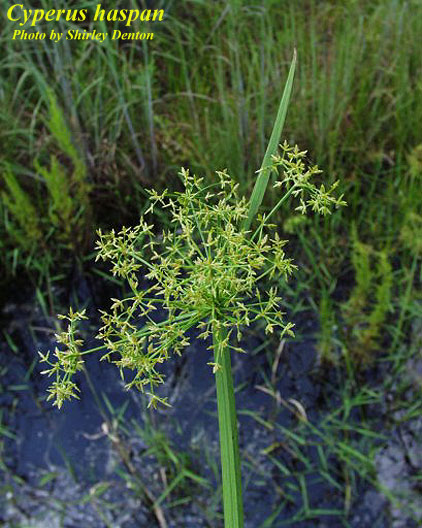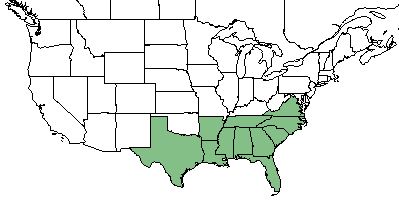Difference between revisions of "Cyperus haspan"
(→Ecology) |
(→Cultivation and restoration) |
||
| Line 44: | Line 44: | ||
==Cultivation and restoration== | ==Cultivation and restoration== | ||
| + | Has been used in landfill restoration areas. <ref name= "Akinbile" [Akinbile, C., et al. (2012). "Landfill leachate treatment using sub-surface flow constructed wetland by Cyperus | ||
| + | haspan." Elsevier.]</ref> | ||
| + | |||
==Photo Gallery== | ==Photo Gallery== | ||
<gallery widths=180px> | <gallery widths=180px> | ||
</gallery> | </gallery> | ||
==References and notes== | ==References and notes== | ||
Revision as of 20:16, 18 May 2018
| Cyperus haspan | |
|---|---|

| |
| Photo by the Atlas of Florida Plants Database | |
| Scientific classification | |
| Kingdom: | Plantae |
| Division: | Magnoliophyta - Flowering plants |
| Class: | Liliopsida - Moncots |
| Order: | Cyperales |
| Family: | Cyperaceae |
| Genus: | Cyperus |
| Species: | C. haspan |
| Binomial name | |
| Cyperus haspan L. | |

| |
| Natural range of Cyperus haspan from USDA NRCS Plants Database. | |
Contents
Taxonomic Notes
Synonym: none
Variety: C. americanus (Böckler)
Description
C. haspan is a perennial graminoid of the Cyperaceae family that is native to North America. [1]
Distribution
C. haspan is distributed across the southeastern region of the United States; from Florida north to Virginia and west to Texas. [1]
Ecology
Habitat
Common habitats for C. haspan is in tidal marshes, low fields, ditches, and waterfowl impoundments. [2]
Phenology
C. haspan commonly flowers between April and September. [3]
Conservation and Management
Cultivation and restoration
Has been used in landfill restoration areas. <ref name= "Akinbile" [Akinbile, C., et al. (2012). "Landfill leachate treatment using sub-surface flow constructed wetland by Cyperus haspan." Elsevier.]</ref>